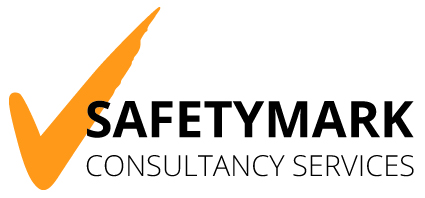Title Page
-
Audit Title
-
Client / Site
-
Conducted on
-
Prepared by
-
Location
-
Personnel
Critical Risk Areas
1.0 Working at Heights
-
1.1 Safety harness worn and used correctly where required?
-
1.2 Open holes and unprotected edges hard barricaded?
-
1.3 Safety nets installed where required and to standard?
-
1.4 Workers use safe means of access e.g. ladder, EWP, scaffold etc.
-
1.5 Scaffold built to standard?
-
1.6 Scaffold inspected weekly and tagged accordingly?
-
1.7 Scaffold inspected by a competent person (competency of scaffold inspector verified)?
-
1.8 Housekeeping maintained on scaffold platforms / landings (safe access and egress)?
-
1.9 Ladder of commercial grade and used correctly?
-
1.10 Temporary work platforms have guard rails installed?
-
1.11 Temporary work platforms built to OEM spec?
2.0 Lifting Operations
-
2.1 Rigging and lifting gear in good condition with current inspection?
-
2.2 Lifting area barricaded / flagged / coned off?
-
2.3 Tag lines used to control the load?
-
2.4 No overhead lifting?
-
2.5 Lift plan in place for big and/or complex lifts?
3.0 Heavy Machinery and Excavations
-
3.1 Excavations shored and braced where required?
-
3.2 Edge protection around open excavations?
-
3.3 Safe access and egress provided in the excavation?
-
3.4 Equipment operators licensed to operate machinery?
-
3.5 Equipment log books available and up to date?
-
3.6 Equipment inspected daily prior to use?
-
3.8 Spotters used during earthworks activities?
-
3.7 Services identified and controls in place to prevent contact / damage?
Keeping Healthy
4.0 Hazardous Substances, ACM and Silica Dust
-
4.1 Hazardous substance register in place?
-
4.2 SDS's in place for all hazardous substances on site?
-
4.3 Quantities kept to an 'in-use' amount?
-
4.4 Spill kit available?
-
4.5 Asbestos removal plan / procedure available?
-
4.6 ACM removed by a licensed removal specialist?
-
4.7 Worksafe notified of ACM?
-
4.8 All employees involved in ACM removal have been respirator fit tested?
-
4.9 ACM dumped at authorized dump site?
-
4.10 Silica dust controlled at source e.g. at source vacuum, wet cut method, etc.?
-
4.11 No dry sweeping of concrete dust?
-
4.12 P2 dust masks worn if silica dust exposure is likely to occur?
Priority Controls
5.0 Safety Signage
-
5.1 Sufficient signage posted (e.g. no unauthorized entry, emergency assemble, powder actuated tools in use etc.?
-
5.2 Site safety board displayed and up to date?
-
5.3 Mandatory PPE requirements displayed?
6.0 Personal Protective Clothing
-
6.1 Minimum PPE requirements complied with?
-
6.2 Hard hats worn correctly (chin straps at heights, no caps or beanies, etc.)?
-
6.3 Eye protection worn where required?
-
6.4 Respiratory protection worn where required?
-
6.5 Face shield or goggles worn where required?
-
6.6 Foot protection worn with steel caps?
7.0 Housekeeping
-
7.1 Work areas are clean and free of excess trash and debris?
-
7.2 Walkways and access routes clear?
-
7.3 Material or equipment properly stored and stacked?
-
7.4 Electrical cords, hoses, etc. elevated or routed neatly to prevent trip hazards?
-
7.5 Timber or other scrap material free of protruding nails or other puncture hazards?
-
7.6 Waste bins available and maintained?
-
7.7 End caps installed and maintained?
8.0 Hand Tools, Equipment and Power Tools
-
8.1 Electrical cords - condition and current inspection?
-
8.2 Hand tools maintained in safe condition?
-
8.3 Hydraulic and pneumatic hose connections properly secured?
-
8.4 Power tools maintained and current inspection valid?
9.0 Powder Actuated Tools
-
9.1 Are users of powder actuated tools certified to use them?
-
9.2 Are warning signs displayed where powder actuated tools are used?
-
9.3 Task area barricaded to prevent unauthorized persons from entering?
-
9.4 Misfired charges secured and discarded as per requirement?
-
9.5 Powder actuated tools not left unattended?
10.0 Emergency Preparedness and Response
-
10.1 Fire extinguishers properly located and inspected?
-
10.2 Emergency contact details displayed?
-
10.3 Emergency evacuation plan displayed and assembly point identified?
-
10.4 Emergency response plan covers all potential emergency scenarios (e.g. rescue from heights following a fall)?
-
10.5 First aid kit available and stocked?
11.0 Public & PCBU Interface
-
11.1 Other PCBU's on site informed of the risks & hazards they may be exposed to?
-
11.2 Proof of coordination between PCBU's?
-
11.3 Safe thoroughfares for public where required?
-
11.4 Routes clearly marked and signage installed?
-
11.5 Site fenced to prevent unauthorized access?
12.0 Environmental
-
12.1 Bins provided for waste and off-cut material?
-
12.2 Bins not over-full?
-
12.3 Dust controlled at source?
-
12.4 Spill kits available?
13.0 Administrative Controls
-
13.1 Principle's SSSP in place and approved by client?
-
13.2 Project Hazard / Risk Register in place?
-
13.3 Construction Manager on-boarding checklist up to date?
-
13.4 All workers inducted (including subcontractors)?
-
13.5 Sign in / out register in place and maintained?
-
13.6 Subcontractor SSSP's in place, reviewed and signed off accordingly?
-
13.7 Subcontractor project specific hazard / risk register in place?
-
13.8 Task analysis in place for high risk activities - proof of CM review and communication workers involved?
-
13.9 Training and competency registers in place for all workers?
-
13.10 Toolbox meetings held weekly and proof of attendance?
-
13.11 Site reviews conducted weekly by supervisors / construction managers?
-
13.12 Incidents reported on occurrence and recorded on an event register?
-
13.13 Notifiable events reported to Worksafe?
-
13.14 Worksafe hazardous work notifications submitted?
-
13.15 Traffic management plan in place, current and approved by regulator?
Observations - Safe / At Risk
-
What did you observe?









